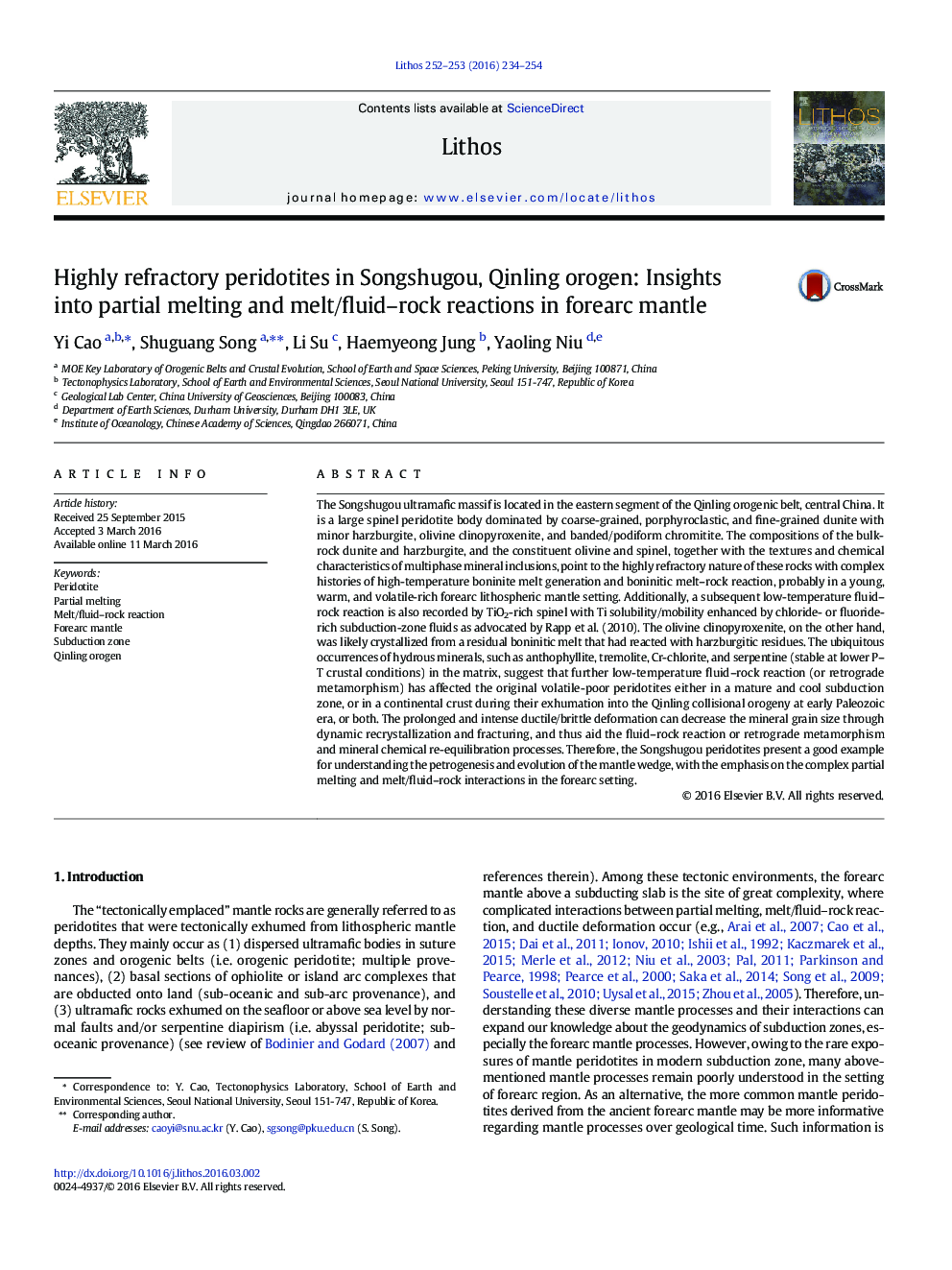| کد مقاله | کد نشریه | سال انتشار | مقاله انگلیسی | نسخه تمام متن |
|---|---|---|---|---|
| 4715586 | 1638648 | 2016 | 21 صفحه PDF | دانلود رایگان |

• Petrogenesis of texturally-different Songshugou peridotites was investigated.
• Partial melting and melt/fluid–rock reaction processes were inferred.
• Original tectonic setting of Songshugou peridotites is inferred to be a forearc mantle.
• Melt/fluid–rock reactions and deformation processes were correlated.
The Songshugou ultramafic massif is located in the eastern segment of the Qinling orogenic belt, central China. It is a large spinel peridotite body dominated by coarse-grained, porphyroclastic, and fine-grained dunite with minor harzburgite, olivine clinopyroxenite, and banded/podiform chromitite. The compositions of the bulk-rock dunite and harzburgite, and the constituent olivine and spinel, together with the textures and chemical characteristics of multiphase mineral inclusions, point to the highly refractory nature of these rocks with complex histories of high-temperature boninite melt generation and boninitic melt–rock reaction, probably in a young, warm, and volatile-rich forearc lithospheric mantle setting. Additionally, a subsequent low-temperature fluid–rock reaction is also recorded by TiO2-rich spinel with Ti solubility/mobility enhanced by chloride- or fluoride-rich subduction-zone fluids as advocated by Rapp et al. (2010). The olivine clinopyroxenite, on the other hand, was likely crystallized from a residual boninitic melt that had reacted with harzburgitic residues. The ubiquitous occurrences of hydrous minerals, such as anthophyllite, tremolite, Cr-chlorite, and serpentine (stable at lower P–T crustal conditions) in the matrix, suggest that further low-temperature fluid–rock reaction (or retrograde metamorphism) has affected the original volatile-poor peridotites either in a mature and cool subduction zone, or in a continental crust during their exhumation into the Qinling collisional orogeny at early Paleozoic era, or both. The prolonged and intense ductile/brittle deformation can decrease the mineral grain size through dynamic recrystallization and fracturing, and thus aid the fluid–rock reaction or retrograde metamorphism and mineral chemical re-equilibration processes. Therefore, the Songshugou peridotites present a good example for understanding the petrogenesis and evolution of the mantle wedge, with the emphasis on the complex partial melting and melt/fluid–rock interactions in the forearc setting.
Journal: Lithos - Volumes 252–253, May 2016, Pages 234–254